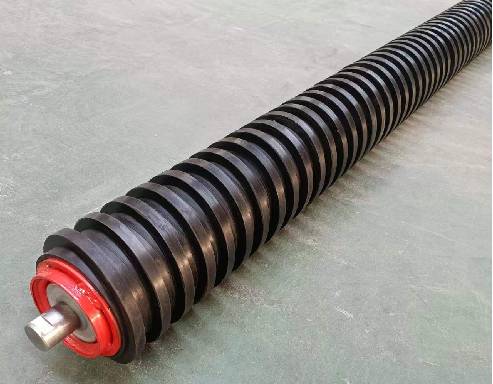 Afrikaans
Afrikaans  Albanian
Albanian  Amharic
Amharic  Arabic
Arabic  Armenian
Armenian  Azerbaijani
Azerbaijani  Basque
Basque  Belarusian
Belarusian  Bengali
Bengali  Bosnian
Bosnian  Bulgarian
Bulgarian  Catalan
Catalan  Cebuano
Cebuano  Corsican
Corsican  Croatian
Croatian  Czech
Czech  Danish
Danish  Dutch
Dutch  English
English  Esperanto
Esperanto  Estonian
Estonian  Finnish
Finnish  French
French  Frisian
Frisian  Galician
Galician  Georgian
Georgian  German
German  Greek
Greek  Gujarati
Gujarati  Haitian Creole
Haitian Creole  hausa
hausa  hawaiian
hawaiian  Hebrew
Hebrew  Hindi
Hindi  Miao
Miao  Hungarian
Hungarian  Icelandic
Icelandic  igbo
igbo  Indonesian
Indonesian  irish
irish  Italian
Italian  Japanese
Japanese  Javanese
Javanese  Kannada
Kannada  kazakh
kazakh  Khmer
Khmer  Rwandese
Rwandese  Korean
Korean  Kurdish
Kurdish  Kyrgyz
Kyrgyz  Lao
Lao  Latin
Latin  Latvian
Latvian  Lithuanian
Lithuanian  Luxembourgish
Luxembourgish  Macedonian
Macedonian  Malgashi
Malgashi  Malay
Malay  Malayalam
Malayalam  Maltese
Maltese  Maori
Maori  Marathi
Marathi  Mongolian
Mongolian  Myanmar
Myanmar  Nepali
Nepali  Norwegian
Norwegian  Norwegian
Norwegian  Occitan
Occitan  Pashto
Pashto  Persian
Persian  Polish
Polish  Portuguese
Portuguese  Punjabi
Punjabi  Romanian
Romanian  Russian
Russian  Samoan
Samoan  Scottish Gaelic
Scottish Gaelic  Serbian
Serbian  Sesotho
Sesotho  Shona
Shona  Sindhi
Sindhi  Sinhala
Sinhala  Slovak
Slovak  Slovenian
Slovenian  Somali
Somali  Spanish
Spanish  Sundanese
Sundanese  Swahili
Swahili  Swedish
Swedish  Tagalog
Tagalog  Tajik
Tajik  Tamil
Tamil  Tatar
Tatar  Telugu
Telugu  Thai
Thai  Turkish
Turkish  Turkmen
Turkmen  Ukrainian
Ukrainian  Urdu
Urdu  Uighur
Uighur  Uzbek
Uzbek  Vietnamese
Vietnamese  Welsh
Welsh  Bantu
Bantu  Yiddish
Yiddish  Yoruba
Yoruba  Zulu
Zulu Exploring the Impact of Lagging Rubber on Performance and Durability in Various Applications
The Future of Lagging Rubber Innovations and Applications
Lagging rubber, also referred to as lagging materials, plays a fundamental role in various industrial applications, particularly in mining, manufacturing, and logistics. With the growing demand for efficient and durable materials, the evolution of lagging rubber is becoming increasingly important. This article will explore the significance of lagging rubber, its uses, innovations in the field, and future trends.
Understanding Lagging Rubber
Lagging rubber is a specialized covering that is applied to the surface of equipment, such as pulleys, conveyor belts, and drums. Its primary purpose is to enhance grip, reduce slippage, and protect underlying materials from wear and tear. Made typically from high-quality rubber compounds, lagging is designed to endure harsh environmental conditions, including extreme temperatures, moisture, and abrasive materials.
One of the most common applications of lagging rubber is in conveyor systems, which are integral to many industrial processes. By improving traction, lagging helps ensure that materials are transported efficiently, reducing downtime and increasing productivity.
Importance of Lagging Rubber in Industry
The importance of lagging rubber cannot be overstated. In industries such as mining, where heavy materials are constantly being transported, lagging helps maintain the reliability of conveyor systems. Without proper lagging, equipment can suffer from excessive wear, leading to costly repairs and downtime. Furthermore, lagging rubber contributes to safety by reducing the risk of material slippage that can result in accidents.
In addition to its functional benefits, the use of lagging rubber aligns with sustainability goals. As industries strive to reduce their carbon footprints, lagging rubber plays a role in extending the life of machinery, thereby minimizing waste and the need for frequent replacements.
Innovations in Lagging Rubber Technology
lagging rubber

Recent advancements in material science have paved the way for innovative lagging rubber solutions
. Manufacturers are now developing advanced rubber compounds that incorporate additives to enhance performance characteristics. For instance, the inclusion of synthetic fibers can improve tensile strength, while special compounds can offer enhanced resistance to chemicals and temperature fluctuations.Moreover, the rise of smart technologies is influencing the development of lagging rubber. Sensors can be embedded within lagging materials to monitor wear and tear in real time. This data-driven approach allows industries to conduct predictive maintenance, reducing unexpected failures and optimizing operational efficiency.
The customization of lagging rubber is also a growing trend. Different industries have varying requirements based on applications and environmental conditions. As a result, manufacturers are increasingly offering tailored solutions that meet specific operational needs, from varying thicknesses to specialized tread patterns.
Future Trends in Lagging Rubber
Looking ahead, several trends are likely to shape the future of lagging rubber. First, the ongoing emphasis on sustainability will encourage the development of eco-friendly materials. Manufacturers are exploring bio-based rubber compounds that reduce reliance on petroleum-based materials.
Furthermore, the integration of digital technologies will enhance the capabilities of lagging rubber. As the Internet of Things (IoT) continues to expand, the connectivity of machinery will allow for more sophisticated monitoring and maintenance strategies. This could lead to the development of smart lagging solutions that alert operators about necessary repairs or replacements before issues escalate.
Another anticipated trend is the increased adoption of lagging rubber in non-traditional industries. As manufacturing processes evolve, sectors like renewable energy and automation will require innovative materials that can withstand dynamic conditions and enhance operational efficiency.
Conclusion
Lagging rubber is more than just a protective covering; it is a vital component in the machinery of modern industry. As technology advances and industries strive for greater efficiency and sustainability, the role of lagging rubber will continue to evolve. With ongoing innovations and a focus on customization, the future of lagging rubber looks promising, ensuring that it will remain an essential element in industrial applications for years to come. By embracing new technologies and sustainable practices, the industry can harness the full potential of lagging rubber, paving the way for enhanced productivity and safety in various sectors.
-
Revolutionizing Conveyor Reliability with Advanced Rubber Lagging PulleysNewsJul.22,2025
-
Powering Precision and Durability with Expert Manufacturers of Conveyor ComponentsNewsJul.22,2025
-
Optimizing Conveyor Systems with Advanced Conveyor AccessoriesNewsJul.22,2025
-
Maximize Conveyor Efficiency with Quality Conveyor Idler PulleysNewsJul.22,2025
-
Future-Proof Your Conveyor System with High-Performance Polyurethane RollerNewsJul.22,2025
-
Driving Efficiency Forward with Quality Idlers and RollersNewsJul.22,2025





























